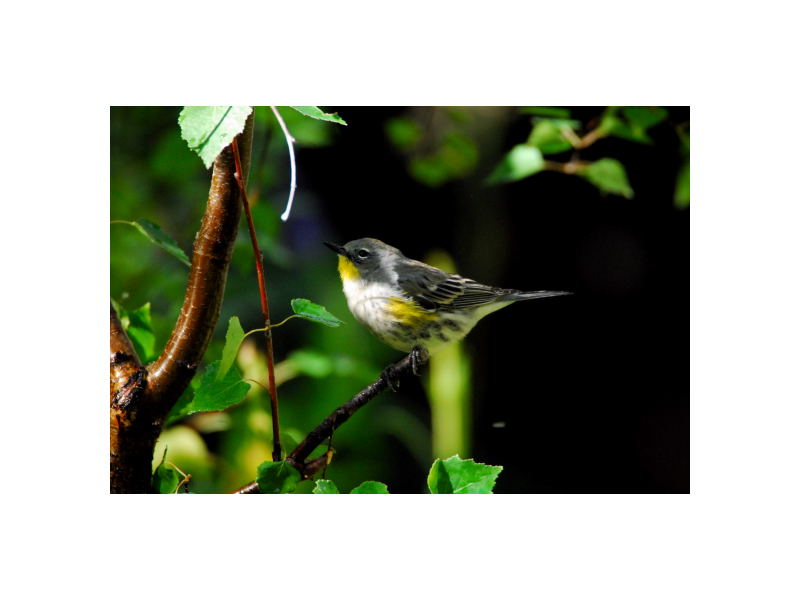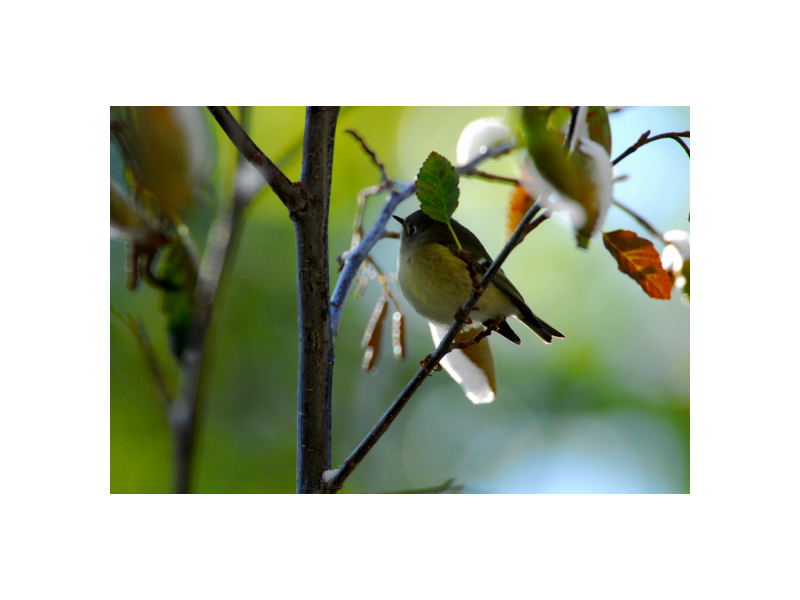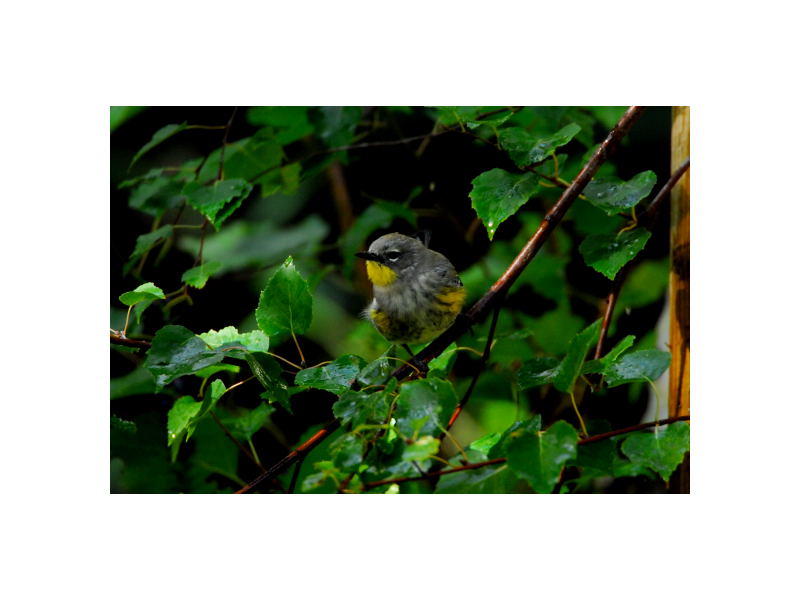
Observers: Donna Willey
Email: basina@verizon.net
Date: 10/11/2007
Time: 09:32 PM -0400
As the days get shorter and colder the nights, the birds passing through the mountains are numerous and intriguing. Townsend’s warbler with their bright yellow face and eye-mask of black, darkest green cap and back slightly streaked with black lines (females) belong to the virens (Black-throated green warbler) complex and are related to the Black throated green, Golden-cheeked and Hermit warblers. The Townsend’s breeds in the northern coniferous forests, such as the Cascades in Washington state, where it is moist and cool and they winter in the coastal woodlands of California, the highlands of Mexico and northern Central America. Hybridization occurs when the range of the Hermit warbler overlaps with the Townsend. In the winter these warblers are very often found in mixed flocks of small birds, such as Kinglets, chickadees and other types of warblers. This is how I found them along Mammoth creek. With much calling and chip notes their small flock would move over the alder and aspen growing along the creek or they would forage at any height amongst the firs and Jeffrey pines lining the slope above the creek. Foraging with the Townsend’s were ruby-crowned Kinglets and mountain Chickadees also joining the mixed flock were 2 warbling Vireos and at least 1 Hermit warbler. It was interesting to note that everytime I spotted the Hermit warbler it was high, near the top of a conifer which is their preferred foraging spot. Hence, I was not able to easily photograph the Hermit warbler whereas the Townsend’s and the Kinglet’s foraged all over and at any height. The pine siskin, photographed in my yard, is not a neotropical migrant, like the Townsend’s warbler and the flycatchers. They, like the mountain chickadees, may remain throughout the winter. When the ground is blanketed with snow and the temps dip they will brighten our day along with the nuthatches, woodpeckers, Stellar’s Jay and other birds that will remain. Siskins, redpolls and goldfinches are a closely related group of “seed specialists.” The Siskins like to feed in flocks, which after breeding, may number in the hundreds. Last winter, which was a mild one, several Hermit thrush took up residence at the creek. Perhaps the photo of the Hermit Thrush is one of these and he intends to stay. Time will tell. The Townsend’s warblers were here in the mountains just 3 days ago, when we had our second snow I watched them forage through the aspen/alder thicket as lumps of snow melted and fell off the nearly leafless bushes. They have departed; however the ruby-crowned Kinglets remain still gleaning the bushes for every last insect they can find to devour; their round, plump bodies flitting from branch-to-branch, from leaf-to-leaf… They are fun to watch ….they winter south from southern B.C. and California and across the southern tier of states to southern New England.













